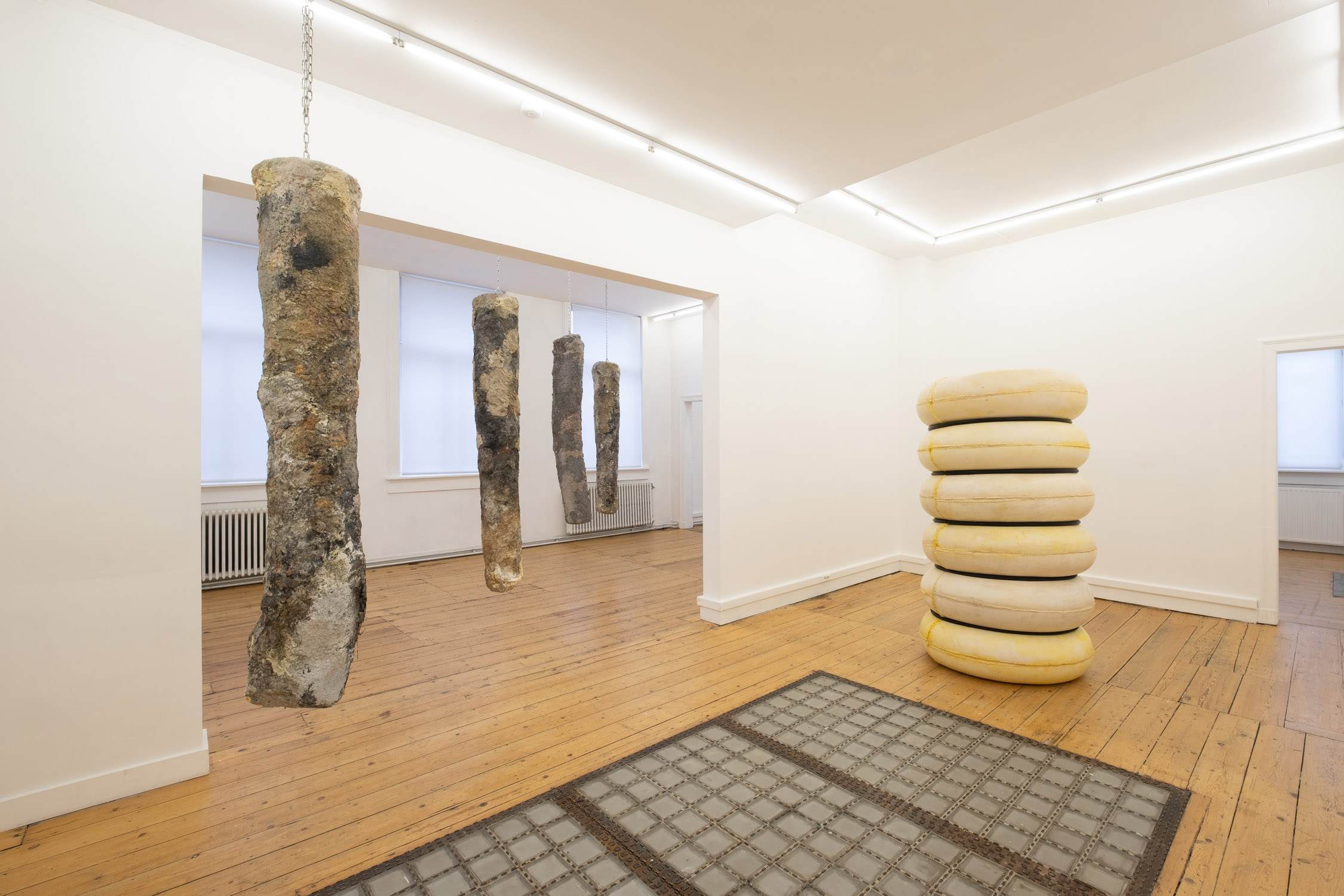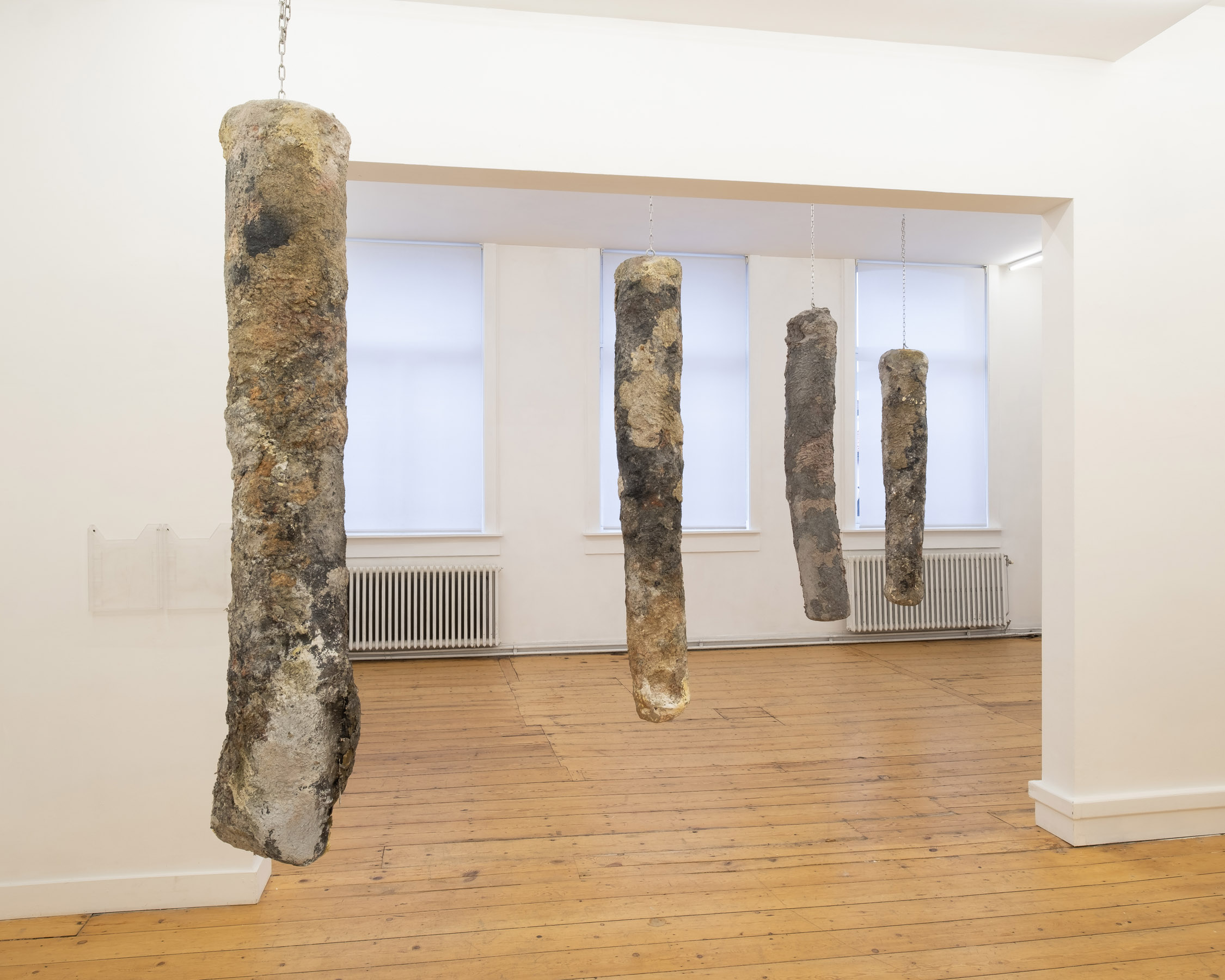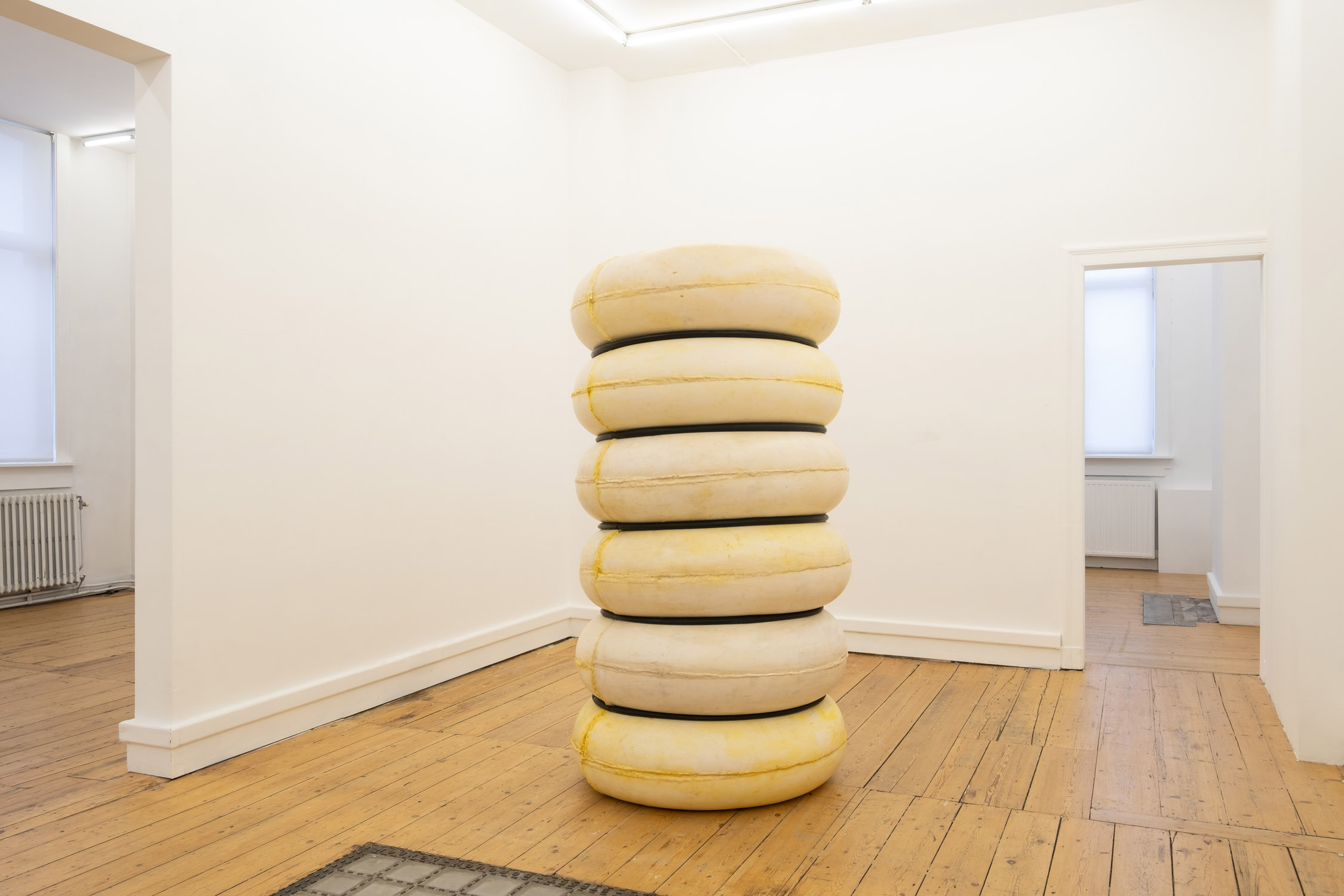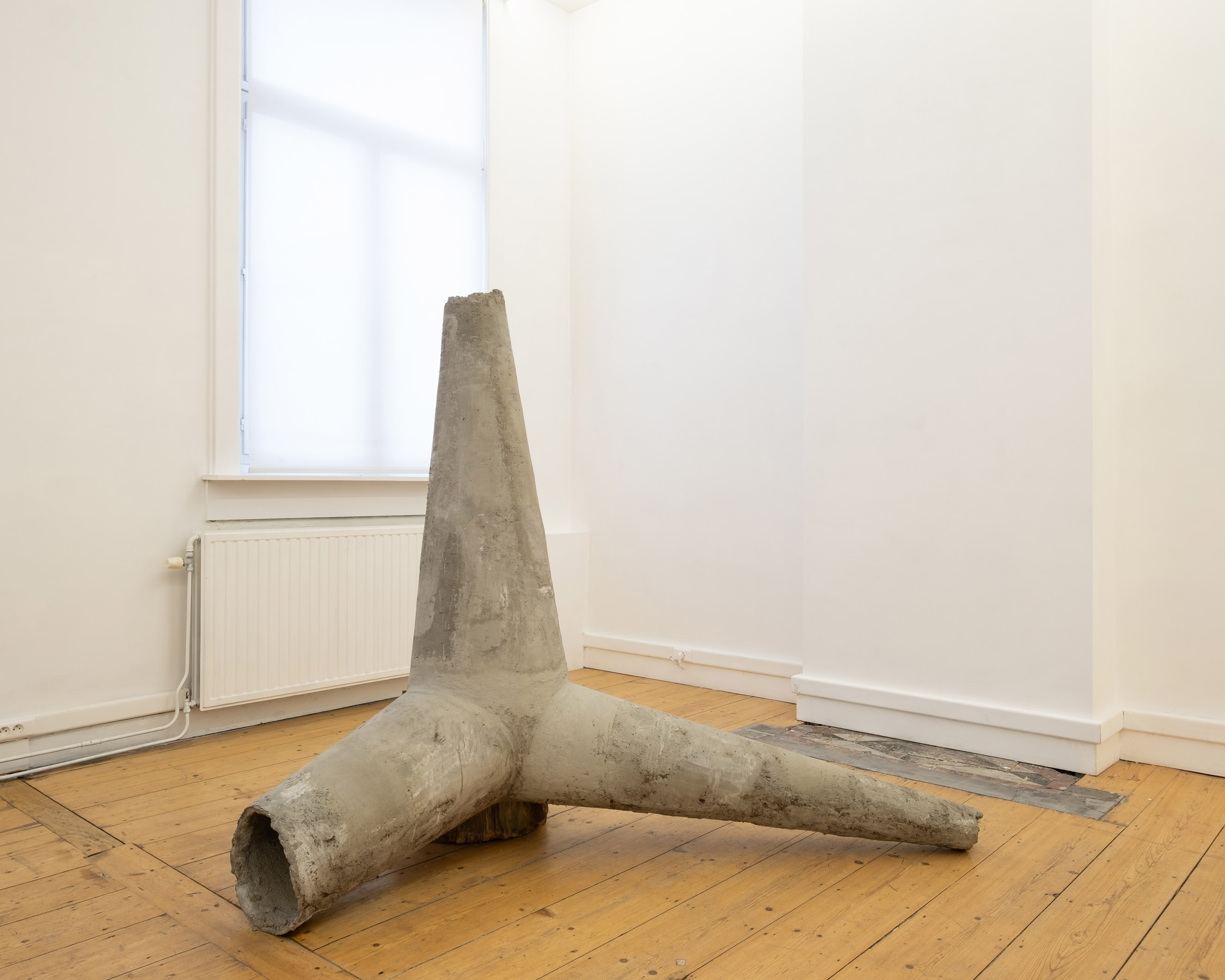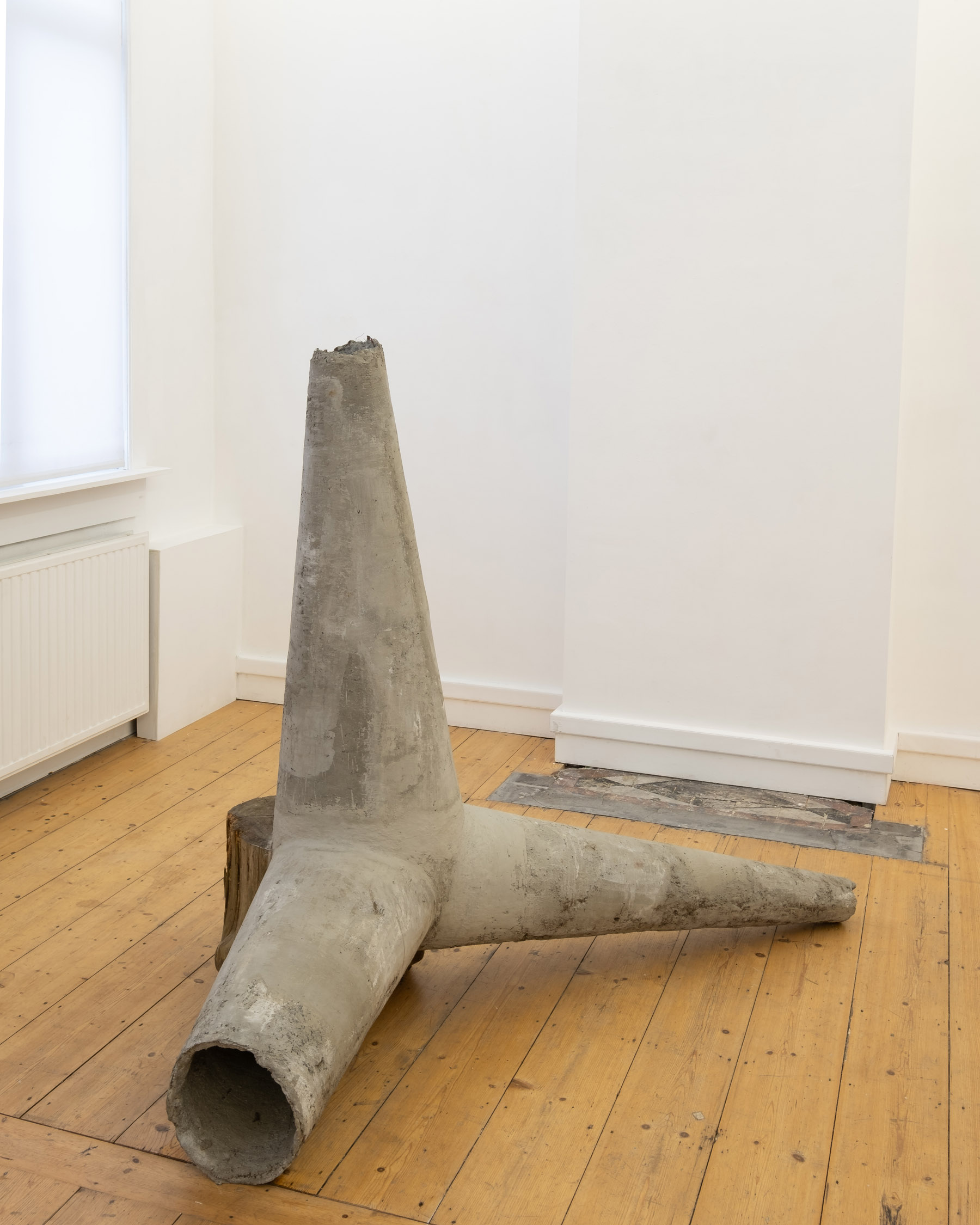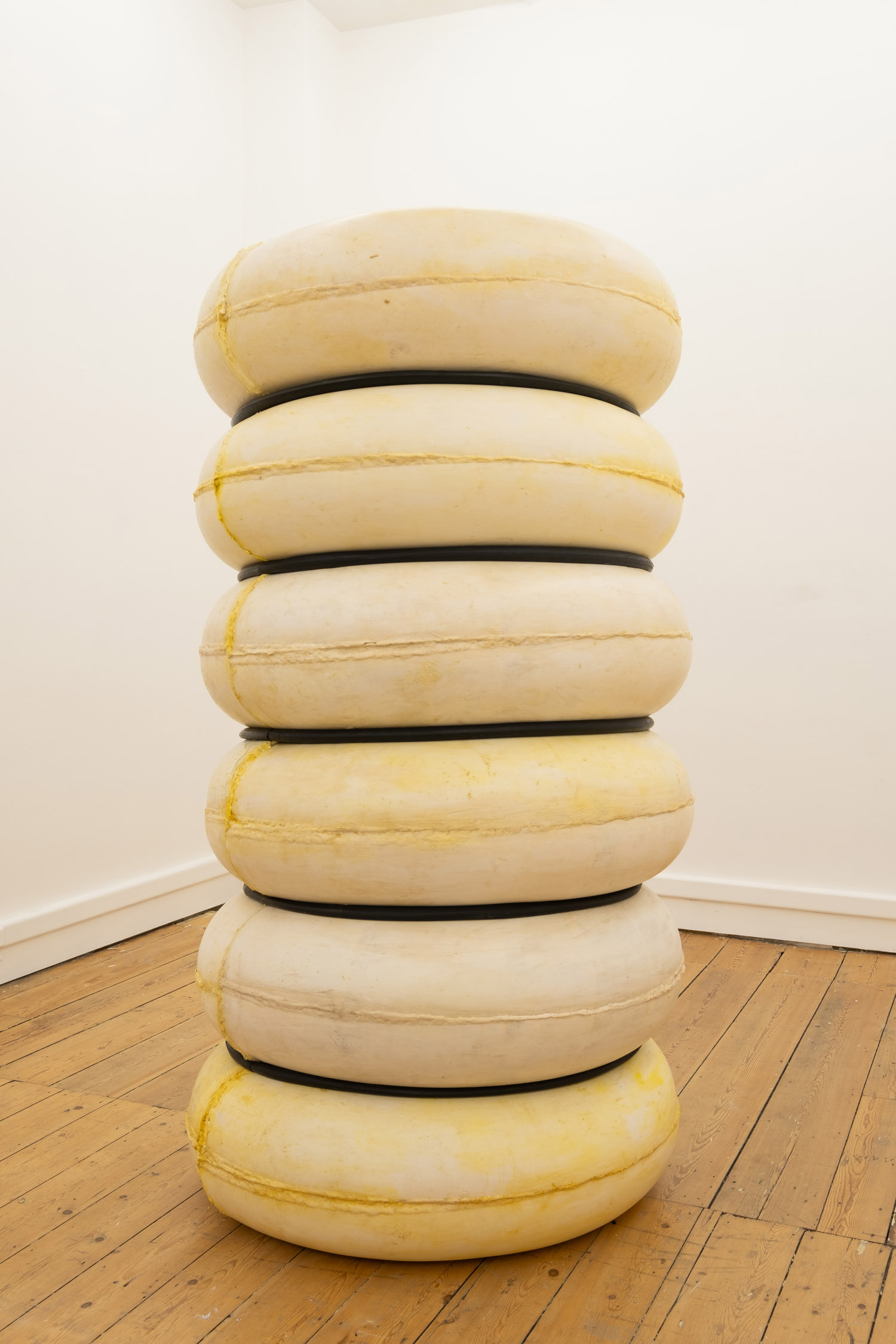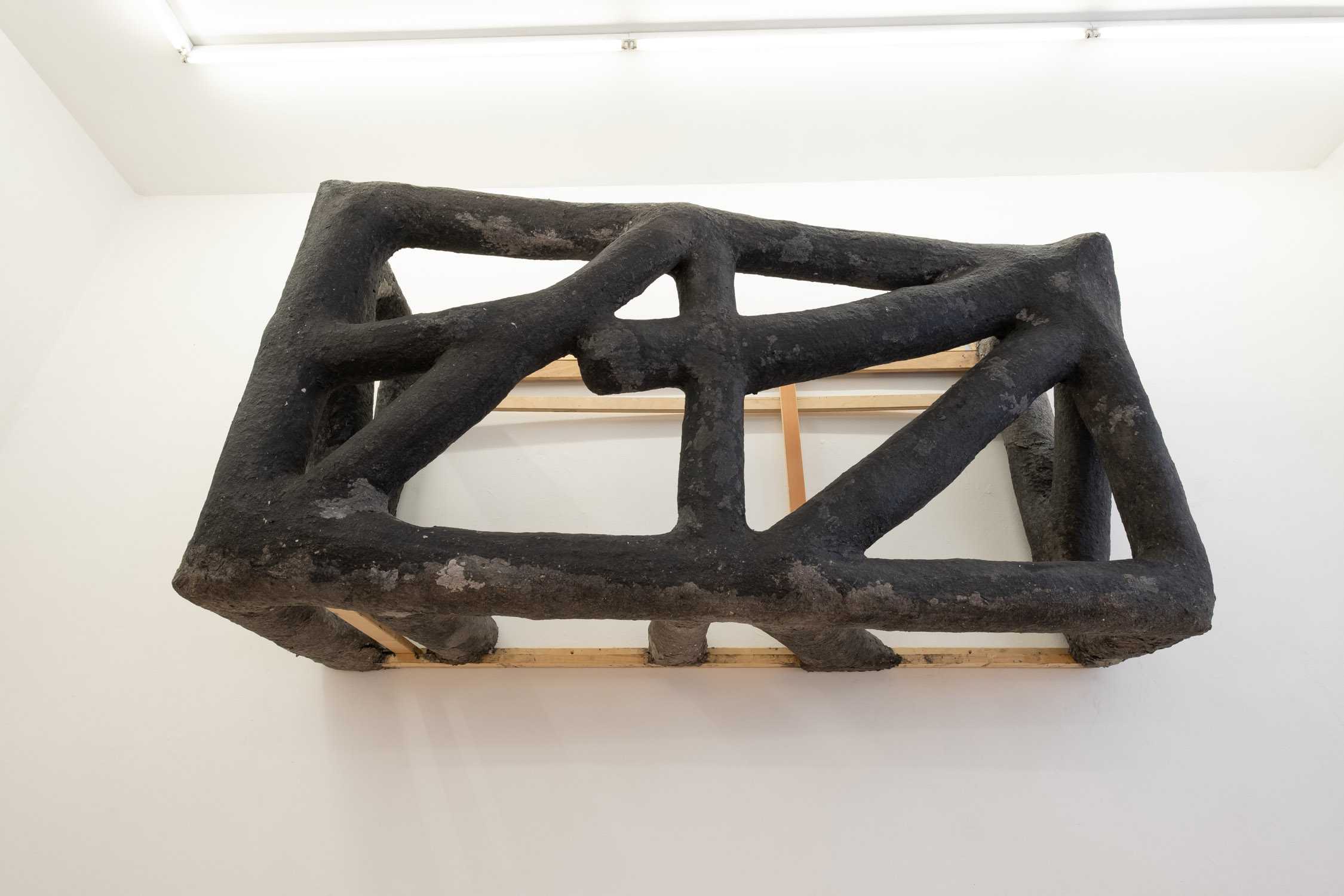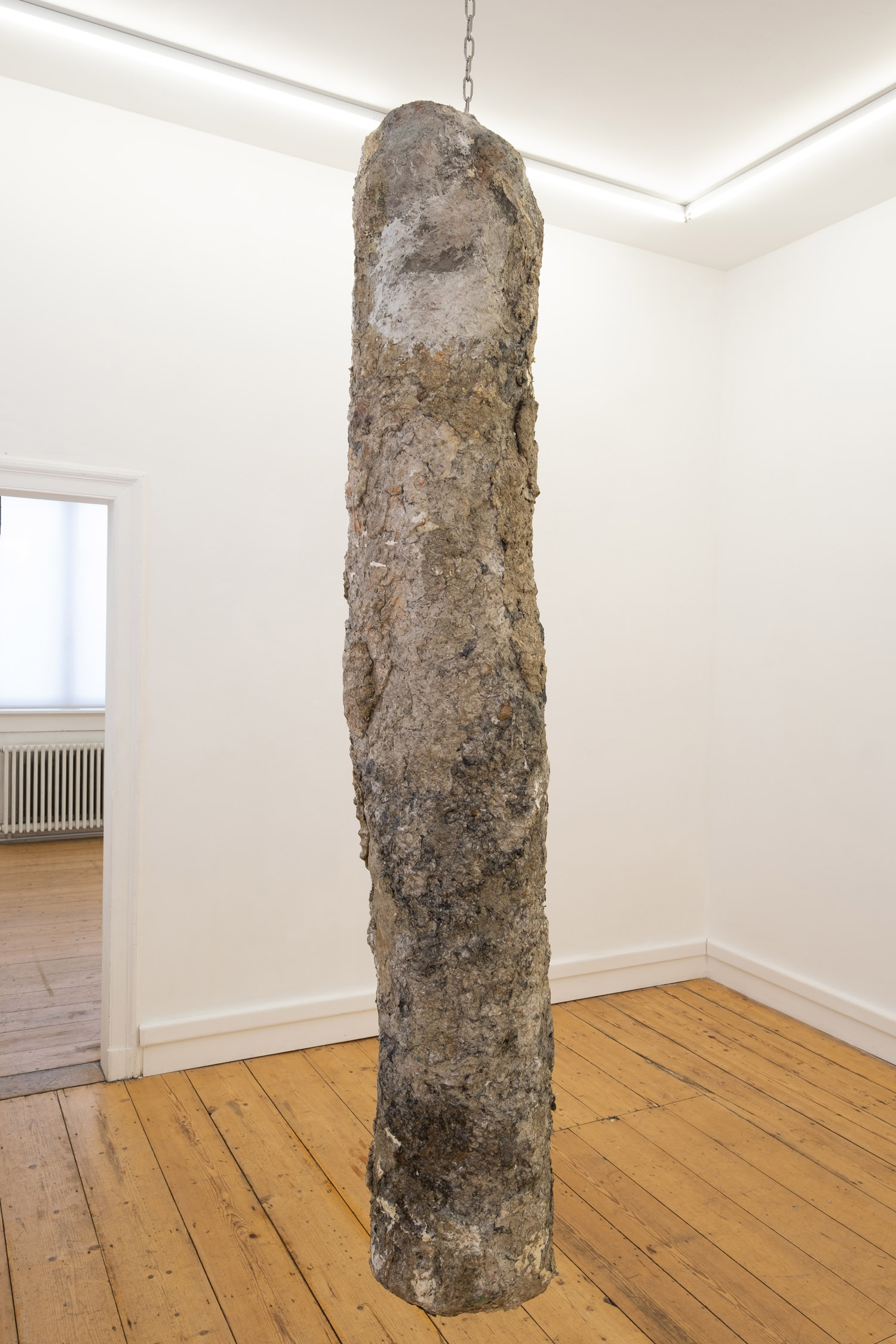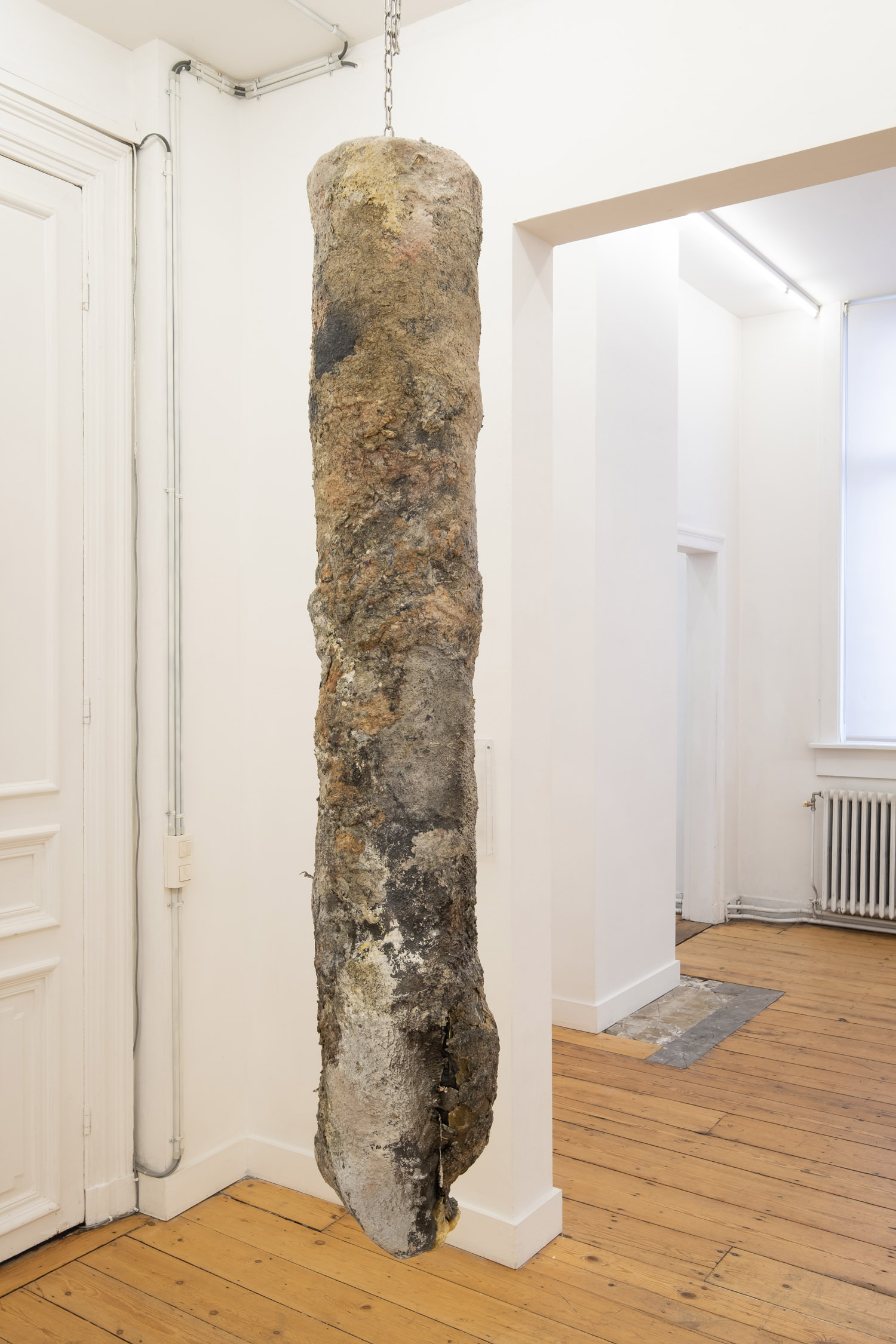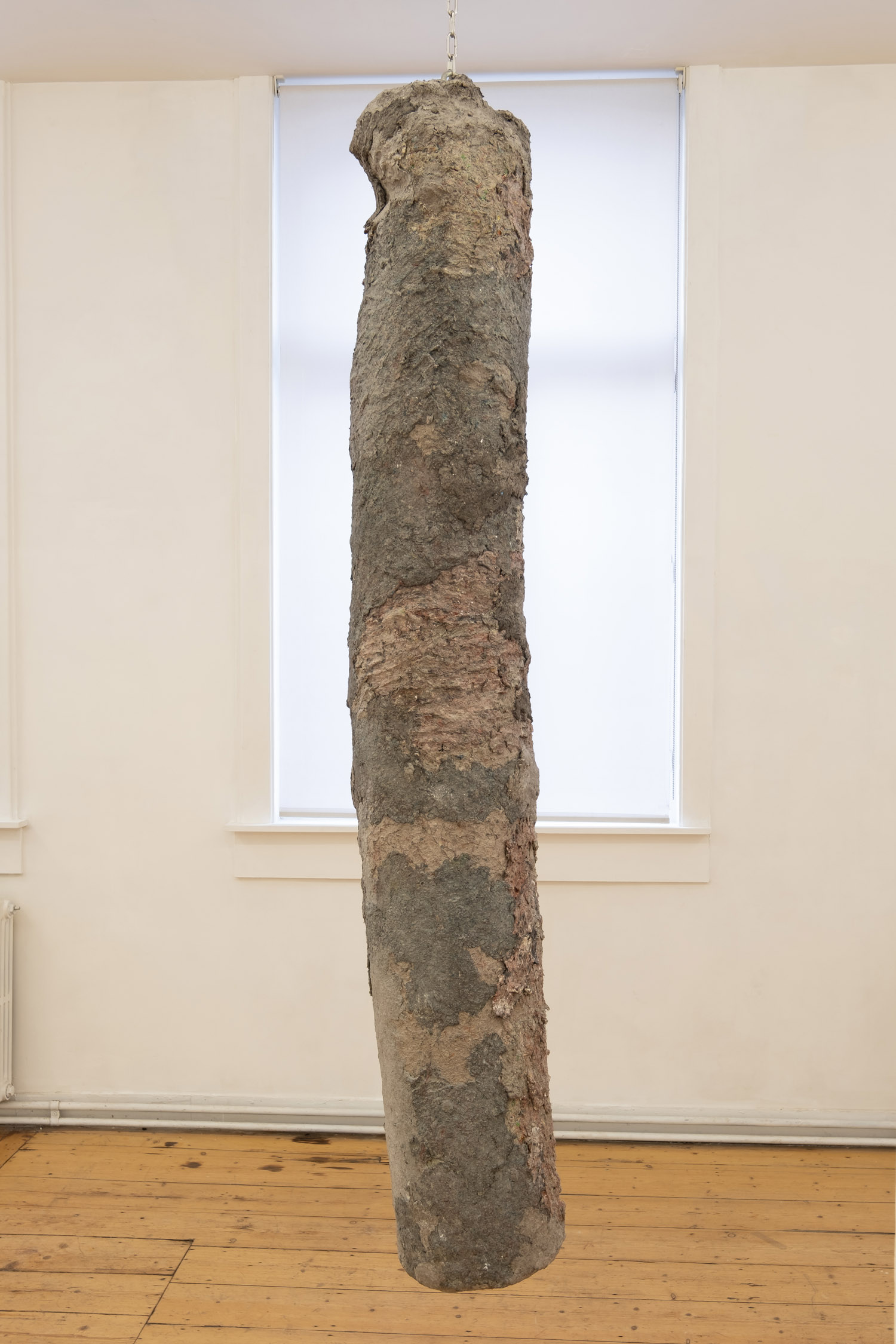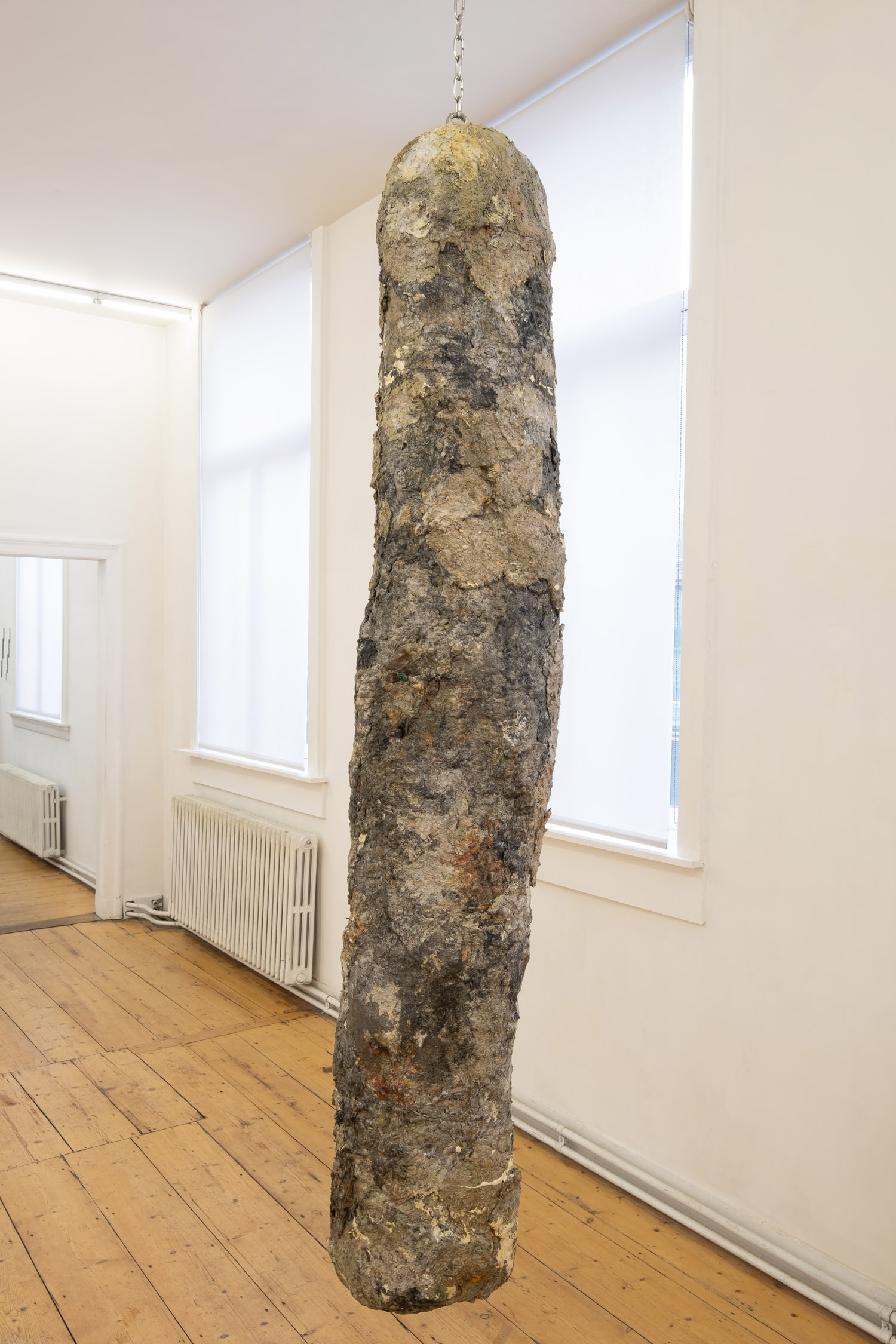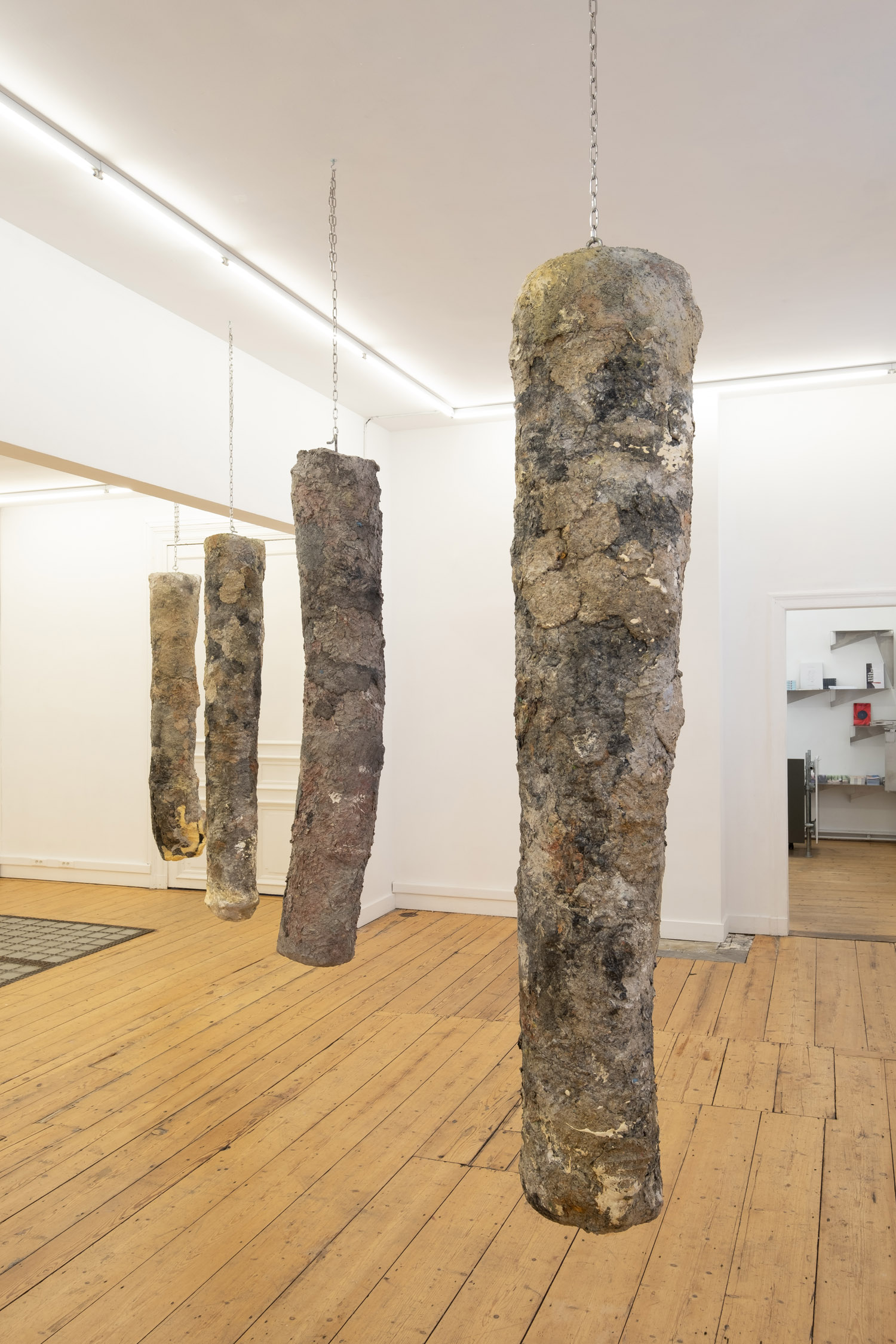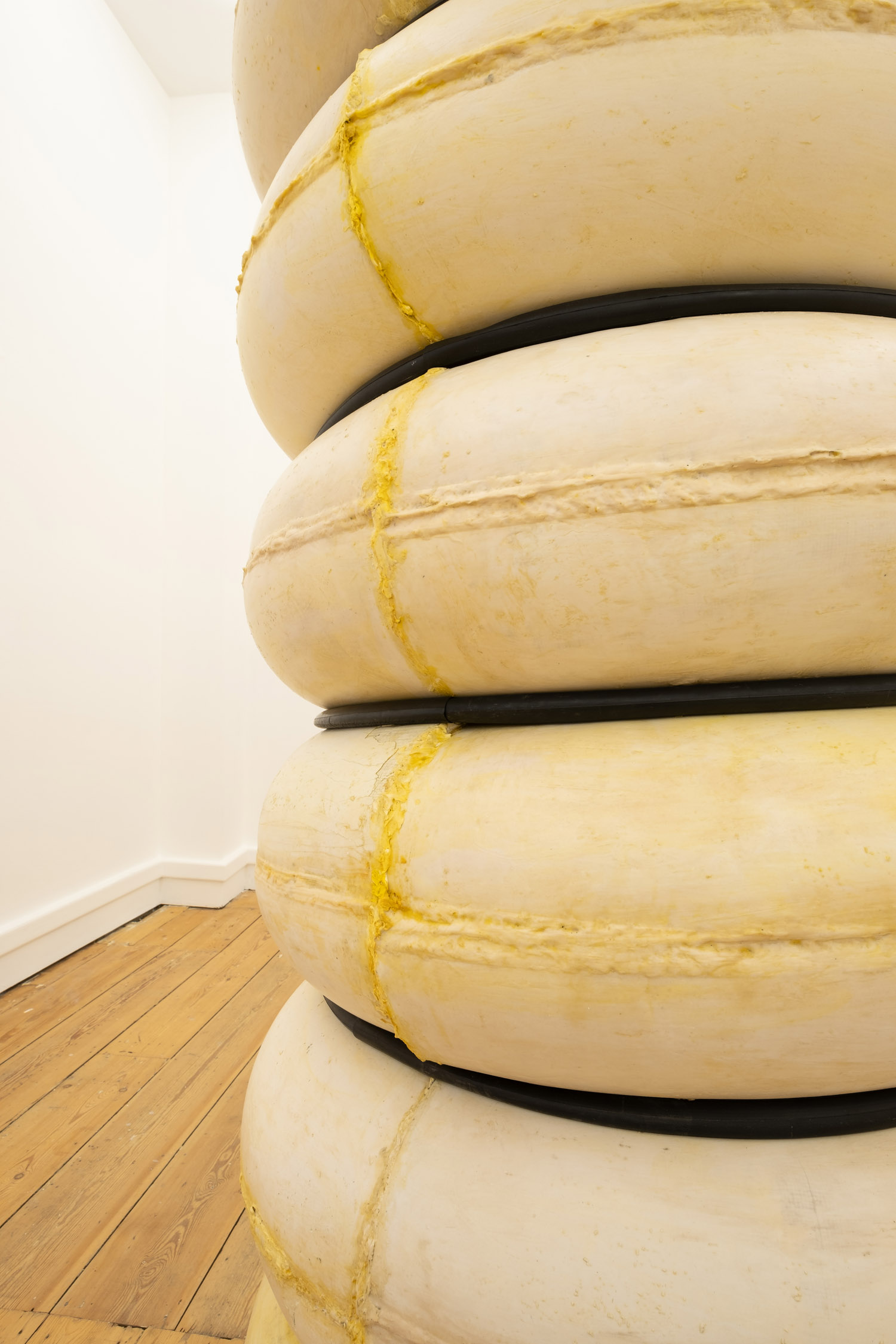Artist: Leyla Aydoslu
Exhibition title: Helene Müllers Balcony
Venue: Fred & Ferry, Antwerp, Belgium
Date: April 6 – May 4, 2024
Photography: Tomas Uyttendaele / all images copyright and courtesy of the artist and Fred & Ferry, Antwerp
Leyla Aydoslu places figures in space such that you can’t ignore them. The sturdy sculptures transform tension and structure into a sense of confusion about their material and coherence. Her arrangements are stage sets to roam around in. Akin to a forest filled with hidden nooks, caverns and slopes, the sculptures are a free haven for observation. Where does the artwork end and the room begin? How do spectators react to the direct physical presence before them? Aydoslu’s practice encompasses both objects and abstract ideas or concepts. Her art comes to be at the nexus where these elements meet.
Looking for a delicate equilibrium between presence and confrontation, Aydoslu sets the stage for a scenario where the spectator becomes an active participant. Gaining a comprehensive understanding necessitates considering various perspectives. You can’t count on your gaze having been multiple enough the first time around. Viewers have to move along and put in effort. The human body shares the location with the sculpture, inevitably assuming an equal footing with the object that’s sometimes even obstructing the view. The pendulum between awareness of presentation and the taking up of space continues to rock back and forth.
The artist draws inspiration from what’s hooked to her memory; the immediate, the urban, or the architectural. Contours that manage to weave their way between the sensory and the curious. They take on shape again in the studio where Aydoslu searches for the right materials, allowing the silhouettes to further shift. References to a reality beyond the artwork itself linger in the shadows, though the sculptures are never images or direct portrayals of reality. The work mostly wants to be what it simply is. The artist keeps the structure visible, the load palpable, the material tangible.
To illustrate her intentions, Aydoslu refers to spomeniks, monuments built between 1950 and 1990 in former Yugoslavia. Their construction was politically motivated with either commemoration or glorification at the core. However, it is mainly the large amount of space they use to convey a point of view that draws the artist’s attention. They wouldn’t work on a smaller scale. Like a 3D sketch of an idea, they cannot help but be grandiose and imposing in order to carry the weight of the message. Aydoslu compares them to land art: large-scale markings of the landscape in weighty materials, made with a certain degree of self-evidence. Though to her, nothing about it is evident. Due to decay, the intensity of the spomeniks is now giving way to oblivion. As if time is melting them away. It is onto this intersection of scale, shape, and fluidity that the artist wants to graft her sculptures.
Aydoslu does her preliminary studies directly at a 1:1 scale, immediately representing actual size. The dimensions lie material upon a scale, guiding her towards the (im)balance she is looking for. Her static sculptures almost suggest movements. As if they spin, rock, or snap just when you weren’t looking. Like Jenga blocks visibly alternate between bearing and wobbling, the pressure in her structures’ components remains detectable. They squeeze on each other, hang fastened between, carry a clenching. Texture leaves a physical layer on the tension’s surface. It invites further investigation. Can I pull this or will it trigger an avalanche of debris?









